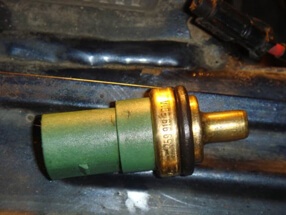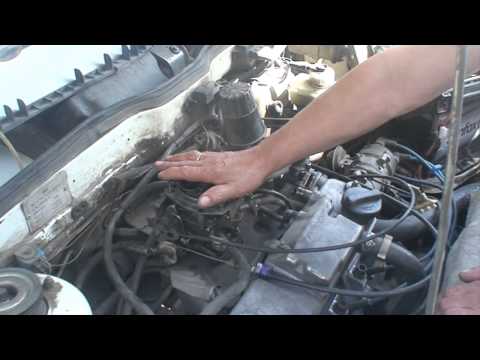
Poor hot start
Content
With the advent of hot days, more and more drivers are faced with the problem of poor starting of the internal combustion engine on a hot one after a few minutes of parking. Moreover, this is not only a problem with carburetor ICEs - the situation when it does not start on a hot one can wait for both owners of cars with injection ICE and diesel cars. It's just that everyone's reasons are different. Here we will try to collect them and identify the most common ones.
When it does not start on a hot carburetor internal combustion engine

Why it starts badly on a hot one and what to produce
The reasons why the carburetor does not start well on a hot one are more or less clear, here mainly the volatility of gasoline is to blame. The bottom line is that when the internal combustion engine has warmed up to operating temperature, the carburetor also heats up, and after turning it off, within 10-15 minutes, the fuel begins to evaporate, so it is difficult to start the car.
To start a hot internal combustion engine in such a situation, pressing the gas pedal to the floor and purging the fuel system will help, but not longer than 10-15 seconds, since fuel can flood the candles. If the question concerns the Zhiguli, then the fuel pump may also be to blame, since the Zhiguli gasoline pumps really do not like heat and sometimes completely refuse to work when overheated.
When the injection engine does not start
Since an injection ICE is somewhat more complicated than a carburetor, respectively, there will be more reasons why such an engine does not start. namely, they can be failures of the following components and mechanisms:
- Coolant temperature sensor (OZH). In hot weather, it can fail and give incorrect information to the computer, namely, that the coolant temperature is above normal.
- Crankshaft position sensor (DPKV). Its failure will lead to incorrect operation of the ECU, which in turn will not allow the internal combustion engine to start.
- Mass air flow sensor (DMRV). In hot weather, the sensor may not cope with the tasks assigned to it, since the temperature difference between the incoming and outgoing air masses will be insignificant. In addition, there is always the possibility of its partial or complete failure.
- fuel injectors. Here the situation is similar with the carburetor ICE. The fine fraction of gasoline evaporates at high temperatures, forming an enriched fuel mixture. Accordingly, the internal combustion engine cannot start normally.
- Fuel pump. namely, you need to check the operation of its check valve.
- Idle speed regulator (IAC).
- Fuel pressure regulator.
- Ignition module.
then let's move on to considering possible causes with poor hot start in cars with diesel ICEs.
When it is difficult to start on a hot diesel engine
Unfortunately, diesel engines can also sometimes fail to start when hot. Most often, the causes of this phenomenon are breakdowns of the following nodes:
- Coolant sensor. The situation here is similar to that described in the previous section. The sensor may fail and, accordingly, transmit incorrect information to the ECU.
- crankshaft position sensor. The situation is similar to the injection engine.
- Mass air flow sensor. Likewise.
- High pressure fuel pump. namely, this can happen due to significant wear of the bushings and the oil seal of the pump drive shaft. Air enters the pump from under the stuffing box, which makes it impossible to build up working pressure in the sub-plunger chamber.
- Diesel engine idle system.
- Fuel pressure regulator.
- Ignition module.
Now we will try to summarize the information provided so that it would be easier for you to find the cause of the breakdown if it happened to your car.
DTOZH
fuel injectors
plunger pair of injection pump
Top XNUMX Reasons for Poor Hot Startup
So, according to statistics, the main reasons for the poor start of the internal combustion engine after downtime at high temperatures are:
- The enriched fuel mixture, which is formed due to low-quality gasoline (its light fractions evaporate, and a kind of "gasoline fog" is obtained).
- Faulty coolant sensor. At a high ambient temperature, there is a possibility of its incorrect operation.
- Faulty ignition. It may be incorrectly set or there may be problems with the ignition switch.
we will also give you a table where we tried to visually show which nodes can cause problems, and what needs to be checked in different types of ICEs.
| Types of DVS and their characteristic causes | Carburetor | Injector | Diesel |
|---|---|---|---|
| Low-quality fuel, evaporation of its light fractions | |||
| Defective coolant sensor | |||
| Crankshaft position sensor | |||
| Mass air flow sensor | |||
| Fuel injectors | |||
| Fuel pump | |||
| High pressure fuel pump | |||
| Idle speed regulator | |||
| fuel pressure regulator | |||
| Diesel idle system | |||
| Ignition module |
Why does a warm engine stall
Some car owners are faced with a situation where an already running and warmed-up engine suddenly stalls. Moreover, this happens after the sensor has fixed a set of normal operating temperatures. There may be several reasons for this. then we will consider them in more detail, and also indicate what needs to be done in a particular case.
- Low-quality fuel. This situation is typical, for example, if you drive away from the gas station, and after a short period of time, the internal combustion engine starts to "cough", the car twitches and stalls. The solution here is obvious - drain low-quality fuel, purge the fuel system and replace the fuel filter. it is also advisable to replace the candles, but if they are new, you can get by with purging them. Naturally, it is not worth stopping by such a gas station in the future, and if you have saved the receipt, you can go there and make a claim about the quality of the fuel.
- Fuel filter. With the engine stalling, you should also check the condition of the fuel filter. And if, according to the regulations, it is already necessary to replace it, then you need to do it, regardless of whether it is clogged or not.
- Air filter. Here the situation is similar. The internal combustion engine can “choke” on an enriched mixture and stall shortly after starting. Check its condition and replace if necessary. By the way, this way you can also reduce fuel consumption.
- Gasoline pump. If it does not operate at full capacity, then the internal combustion engine will receive less fuel, and, accordingly, will stall after a while.
- Generator. If it completely or partially failed, then it stopped charging the battery. The driver may not immediately notice this fact, start the internal combustion engine and go. However, it will only run until the battery is completely discharged. Unfortunately, it will no longer be possible to restart the internal combustion engine on it. In some cases, you can try to tighten the alternator belt. If this procedure did not help, you need to call a tow truck or call your friends in order to drag your car to a garage or service station.
Try to monitor the normal state of the above nodes and mechanisms. Even minor breakdowns, if they are not eliminated in time, can develop into big problems that will turn out to be expensive and difficult repairs for you.
Hack and predictor Aviator
The first thing you need to do in order for the internal combustion engine to start up normally on a hot one is to refuel at proven gas stations, as well as monitor the condition of your car's fuel system. If, after even a short downtime in the heat, the internal combustion engine does not start, then first open the throttle (press the accelerator pedal) or remove the filter cover and leave it open for a couple of minutes. During this time, the evaporated gasoline will evaporate and you will be able to start the internal combustion engine normally. If this procedure did not help, then you need to troubleshoot among the nodes and mechanisms described above.
